forward guidance
description: a monetary policy tool where a central bank communicates future policy intentions to influence economic decisions
36 results
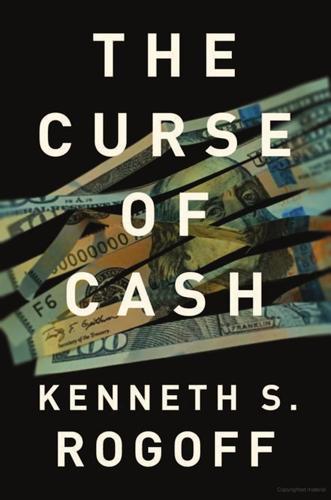
The Curse of Cash
by
Kenneth S Rogoff
Published 29 Aug 2016
The basic idea is one we have already discussed earlier in this chapter: if the central bank cannot reduce the nominal interest rate at the zero bound, it can try to lower real interest rates by manipulating inflation expectations.34 The problem is that such policies are not necessarily credible if they involve allowing future inflation to drift above target, especially if the public believes that central banks have a strong aversion to inflation. The idea of forward guidance is to find practical ways to make the promise of inflation more concrete and easier to understand, and perhaps therefore more credible. Crudely put, forward guidance has the central bank telling markets, “We might not be able to lower interest rates now because of the zero bound, but we promise not to raise them later until our output and inflation projections become substantially stronger. Even then we won’t raise them as fast as we usually would.” Ideally, this reassurance is accompanied by concrete guideposts. This type of forward guidance is sometimes referred to as data-dependent forward guidance, because it basically aims to specify a reaction function to the data.
…
This type of forward guidance is sometimes referred to as data-dependent forward guidance, because it basically aims to specify a reaction function to the data. There is also calendar-based forward guidance, where the central bank says, “We promise not to raise policy rates for at least 6 months” or, as in 2015, many Fed officials insisted, “Rates will begin rising away from the zero bound before the end of this year,” as in fact they did in December 2015.35 The main practical problem with both types of forward guidance is that it is hard for the central bank to credibly make promises in a world where there is regular turnover of policy board members, not to mention of the politicians who ultimately oversee central banks.
…
Some have argued that the zero bound hasn’t really turned out to be all that important, because central banks have found pretty good ways to get around it, using unconventional tools such as “forward guidance” and “quantitative easing.” The first involves telling investors that the monetary authorities intend to elevate inflation in the future, even if they cannot do it now. When it works, forward guidance succeeds in bringing down the real interest rate, even if the nominal interest rate is stuck at zero, since of course the real interest rate is the nominal interest rate minus the expected rate of inflation.
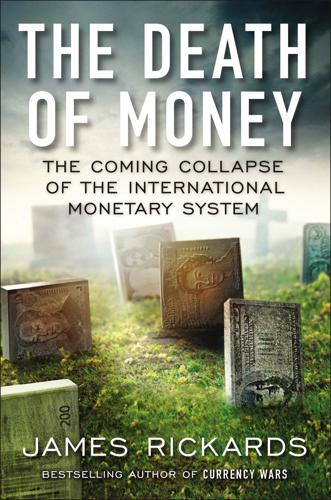
The Death of Money: The Coming Collapse of the International Monetary System
by
James Rickards
Published 7 Apr 2014
The criteria on which the Fed might change its mind were unclear, and so the impact of forward guidance was muted. A debate raged within the Fed about whether forward guidance should be converted from an ever-changing series of dates to a set of hard numeric goals that were more easily observed. This debate was captured in historic and analytic detail in a paper presented by Michael Woodford of Columbia University at the Fed’s Jackson Hole Symposium at the end of August 2012. While Woodford’s argument is nuanced, it boils down to one word—commitment. His point was that forward guidance is far more effective in changing behavior today if that guidance is clear and framed in such a way that the central bank will not repudiate the guidance in the future: A . . . reason why forward guidance may be needed . . . is in order to facilitate commitment on the part of the central bank. . . .
…
While the Fed is focused on the intended effects of its policies, it seems to have little regard for the unintended ones. ■ The Asymmetric Market In the Fed’s view, the most important part of its program to mitigate fear in markets is communications policy, also called “forward guidance,” through which the Fed seeks to amplify easing’s impact by promising it will continue for sustained periods of time, or until certain unemployment and inflation targets are reached. The policy debate over forward guidance as an adjunct to market manipulation is a continuation of one of the most long-standing areas of intellectual inquiry in modern economics. This inquiry involves imperfect information or information asymmetry: a situation in which one party has superior information to another that induces suboptimal behavior by both parties.
…
Bernanke’s logic is deeply flawed because it supposes that the agency that reduces uncertainty does not also add to uncertainty by its conduct. When the Fed offers forward guidance on interest rates, how certain can investors be that it will not change its mind? When the Fed says it will raise interest rates upon the occurrence of certain conditions, how certain can investors be that those conditions will ever be satisfied? In trying to remove one type of uncertainty, the Fed merely substitutes a new uncertainty related to its ability to perform the first task. Uncertainty about future policy has been replaced with uncertainty about the reliability of forward guidance. This may be the second derivative of uncertainty, but it is uncertainty nonetheless, made worse by dependence on planners’ whims rather than the market’s operation.

The Road to Ruin: The Global Elites' Secret Plan for the Next Financial Crisis
by
James Rickards
Published 15 Nov 2016
This did not mean public relations or press liaison. The communications role meant Faust was consigliere and chief wordsmith with respect to forward guidance. Forward guidance is a central bank’s main monetary tool in a world of zero or low rates. The Fed uses forward guidance to manipulate market expectations. Manipulation allows the Fed to tighten or ease policy without changing rates. Instead the Fed changes expectations about rates. This is done with words in speeches, statements, minutes, and press leaks. Those words are forward guidance, and Faust wrote the words. Although not a board member, Faust was arguably the third most powerful figure at the Fed after the chairman and William C.
…
Other market crashes included the burst dot-com bubble in 2000, and the market break after the 9/11 attacks. What was new was that none of these crises involved widespread bank defaults or closures. Without a gold standard, money was now elastic. There was no limit to the liquidity central banks could provide through money printing, guarantees, swap lines, and promises of extended ease called forward guidance. Money was free, or nearly free, and available in unlimited quantities. This new system was not always neat and tidy. Investors suffered losses on the real value of their principal in the 1970s and 1980s. Still, the system itself stayed afloat. The Latin American debt crisis was solved with Brady bonds, named after U.S. treasury secretary Nicholas Brady.
…
Although not a board member, Faust was arguably the third most powerful figure at the Fed after the chairman and William C. Dudley, president of the Federal Reserve Bank of New York. The fact that he was unknown outside the Fed only enhanced the power of his hidden hand, used to move markets with a few choice words. In spy novel parlance, Faust was the “man without a face.” Wordsmithing forward guidance is not done from the sidelines. Providing precise phrases for use in public disclosures required intimate knowledge of FOMC inner workings, and the private views of Bernanke and Yellen. Faust sat in the Fed’s ornate, high-ceilinged boardroom at almost every FOMC meeting during his time there, which included the Fed’s largest program of money printing called QE3, Bernanke’s threat to reduce money printing in a May 2013 speech, and the actual reduction in money printing beginning in December 2013.

The Man Who Knew: The Life and Times of Alan Greenspan
by
Sebastian Mallaby
Published 10 Oct 2016
“Bankers are willing to take on more risk than I have heard them admit to in recent years,” added Governor Mark Olson, who was himself a former banker. Vice Chairman Roger Ferguson pushed the argument further, linking the financial exuberance with the Fed’s forward guidance about future interest rates. “Perhaps we are anchoring the yield curve more than we’d like,” he suggested. “The fixed-income markets in particular are not in fact doing the appropriate job of pricing risks.” He was suggesting that the Fed’s forward guidance had made life too predictable, lulling speculators into complacency. “We need in some sense to remove the anchor that we have placed on those markets,” he concluded.
…
Perhaps not surprisingly, traders in the markets sensed these risks more viscerally than monetary experts. Although he had laid out the problem with forward guidance, Timothy Geithner stopped short of demanding a tougher monetary policy. He had been at the Fed for just over a year, and like everybody there, he deferred to Greenspan’s record of success over almost two decades. Besides, as Geithner himself conceded, there were risks in being tough: even if the Fed’s forward guidance lulled traders into taking too much risk, it seemed perverse to address the problem of a potential future shock by shocking markets preemptively.60 As a result, nobody around Greenspan really challenged his thinking; and at successive FOMC meetings through the rest of the year, Greenspan persisted serenely with his “measured” strategy.
…
In these circumstances, the Fed’s goal was to “continue to convey to the marketplace where our priorities are.” Forward guidance would ensure “as little reaction to our post-meeting statement as possible.”61 In the space of eighteen months, Greenspan had fretted that Wall Street was “reaching for yield,” anticipating that “untoward things” might happen. He had objected to an explicit inflation target, musing that a future FOMC might come to regard asset prices as “a relevant consideration.” He had listened to colleagues’ concerns about the risks in forward guidance, and had come close to embracing their anxiety by diagnosing a “conundrum.”

The Only Game in Town: Central Banks, Instability, and Avoiding the Next Collapse
by
Mohamed A. El-Erian
Published 26 Jan 2016
Because their “analysis does suggest that the unconventional monetary policies, including QE and forward guidance, create hazards by encouraging certain types of risk-taking that are likely to reverse at some point.”5 Similar worries have also been expressed by the BIS, and not just on unusually low interest rates and exceptional large-scale balance sheet operations by central banks. In a March 2014 paper in the BIS Quarterly Review, Andrew Filardo and Boris Hofmann warned that “if financial markets become narrowly focused on certain aspects of a central bank’s forward guidance, a broader interpretation or recalibration of the guidance could lead to disruptive market reactions.”6 Reacting that month to a change in forward guidance, Narayana Kocherlakota, president of the Minnesota Federal Reserve, lamented publicly that such an approach could not only damage the central bank’s credibility but also contribute to undermining the economic recovery.7 These are also issues that former Fed governor Jeremy Stein took up several times, most pointedly in his powerful May 2014 speech to the Money Marketeers Club of New York University.
…
In a March 2014 paper in the BIS Quarterly Review, Andrew Filardo and Boris Hofmann warned that “if financial markets become narrowly focused on certain aspects of a central bank’s forward guidance, a broader interpretation or recalibration of the guidance could lead to disruptive market reactions.”6 Reacting that month to a change in forward guidance, Narayana Kocherlakota, president of the Minnesota Federal Reserve, lamented publicly that such an approach could not only damage the central bank’s credibility but also contribute to undermining the economic recovery.7 These are also issues that former Fed governor Jeremy Stein took up several times, most pointedly in his powerful May 2014 speech to the Money Marketeers Club of New York University. Respected for bringing to the Fed a comprehensive understanding of financial developments—one that I characterized as combining “practical market and theoretical economic assessments with insights from both the efficient market literature and behavioral finance”8—he pointed to the inherent complexities associated with three realities: “the fact that the market is not a single person, the fact that the Committee is not a single person either, and the delicate interplay between the Committee and the market.”
…
El-Erian, “Big Money vs Bernanke: Who’s Right About the Economy,” Atlantic, July 3, 2013, http://www.theatlantic.com/business/archive/2013/07/big-money-vs-bernanke-whos-right-about-the-economy/277548/. 5. Joshua Zumbrun, “Fed Hears Warning That Tightening Policy May Spark Market Tumult,” Bloomberg News, February 28, 2014, http://www.bloom berg.com/news/2014-02-28/fed-hears-warning-that-tightening-policy-may-spark-market-tumult.html. 6. Andrew Filardo and Boris Hofmann, “Forward Guidance at the Zero Lower Bound,” BIS Quarterly Review, March 2014, Bank for International Settlements, http://www.bis.org/publ/qtrpdf/r_qt1403f.htm. 7. Robin Harding, “Federal Reserve Dissenter Kocherlakota Attacks New Guidance,” Financial Times, March 21, 2014, http://www.ft.com/intl/cms/s/0/1607d9b8-b105-11e3-bbd4-00144feab7de.html. 8.
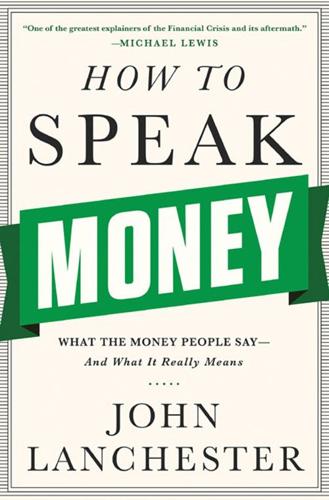
How to Speak Money: What the Money People Say--And What It Really Means
by
John Lanchester
Published 5 Oct 2014
However, the unprecedented recent years of crazy-low interest rates and kooky new policies such as QE have made the markets very anxious about what happens when there’s a change in direction; this in turn has led to a demand for something resembling forward guidance. In effect, the markets are asking for a bit of notice before the banks turn off the money hose. So both the Federal Reserve and the Bank of England have started to adopt a policy of forward guidance, and have both immediately run into the main problem with it. This is that markets know a central bank will in the event of difficulties always do what it feels needs to be done, and this fact will always trump whatever guidance has been given in advance. Forward guidance therefore ends up being a bit like that thing where children make their parents promise to do something, and the parents promise that they will, and then add, “unless we change our minds, forget, or can’t be bothered.”
…
, an hour’s estate planning with a lawyer, and, amusingly/annoyingly, a year at Harvard.36 In 2012, the CLEWI went up 2.6 percent but the CPI went up only 1.4 percent. That means the gap is narrowing! Oh wait, no it doesn’t. The net worth of the 400 richest people in America went up by 11 percent, from $1.53 trillion to $1.7 trillion. forward guidance A policy in which central banks say in advance what they are going to do, as a way of introducing greater levels of confidence into the market. This might not sound like a big deal, but central banks, perhaps because they’re acutely aware how many things aren’t under their control, highly prize the few things that are—so the act of binding themselves in advance to a particular course of action upsets them.
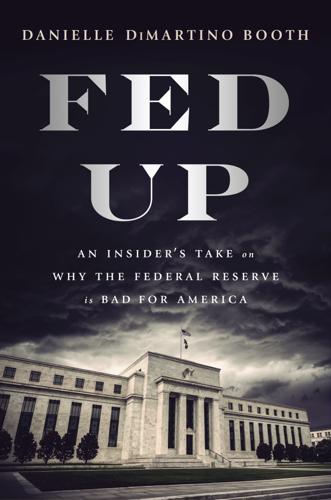
Fed Up: An Insider's Take on Why the Federal Reserve Is Bad for America
by
Danielle Dimartino Booth
Published 14 Feb 2017
Fisher, who believed that, while the Committee should be patient in beginning to normalize monetary policy, improvement in the U.S. economic performance since October has moved forward, further than the majority of the Committee envisions, the date when it will likely be appropriate to increase the federal funds rate; Narayana Kocherlakota, who believed that the Committee’s decision, in the context of ongoing low inflation and falling market-based measures of longer-term inflation expectations, created undue downside risk to the credibility of the 2 percent inflation target; and Charles I. Plosser, who believed that the statement should not stress the importance of the passage of time as a key element of its forward guidance and, given the improvement in economic conditions, should not emphasize the consistency of the current forward guidance with previous statements.” Yet another convoluted FOMC statement that made little sense. All three dissenters—Plosser, Kocherlakota, and Fisher—would soon be gone from the Fed. CHAPTER 22 Culture Shock If it were possible to take interest rates into negative territory, I would be voting for that.
…
For the next five years, the FOMC released a statement only if a change was made. In May 1999, responding to pressure for further transparency, the Fed pivoted and decided to release a statement after each FOMC meeting, regardless of action, to specify the target level of the fed funds rate, and to provide “forward guidance” regarding the balance of risks. But the biggest change was the decision to release lightly edited but otherwise—at least theoretically—complete transcripts of every meeting, with a delay of five years. In some ways transparency backfired. Previously, the FOMC meetings had been unscripted exchanges.
…
“The gas tank is full”: Binyamin Appelbaum, “Q&A: An Advocate for a Quicker Taper,” New York Times, January 27, 2014, economix.blogs.nytimes.com/2014/01/27/qa-an-advocate-for-a-quicker-taper/. “You can’t go from Wild Turkey to cold turkey”: FRBD: Richard Fisher, “Comments on Tailored Regulation and Forward Guidance (With Reference to Dr. Seuss, Strother Martin in Cool Hand Luke and Other Serious Economists)” (speech, Louisiana Bankers Association, New Orleans, Louisiana, May 9, 2014), www.dallasfed.org/assets/documents/news/speeches/fisher/2014/fs140509.pdf. Even during her swearing-in: FRB: Janet Yellen, “Remarks at the Ceremonial Swearing-In,” March 5, 2014, www.federalreserve.gov/newsevents/speech/yellen20140305a.htm.

The Age of Stagnation: Why Perpetual Growth Is Unattainable and the Global Economy Is in Peril
by
Satyajit Das
Published 9 Feb 2016
In February 2015, Yellen abandoned “patient,” simultaneously warning that this did not mean the Fed would be impatient. Forward guidance from the other side of the Atlantic confirmed John Maynard Keynes's fear that “confusion of thought and feeling leads to confusion of speech.”23 On July 4, 2013, European Central Bank president Mario Draghi announced that “key European Central Bank rates [will] remain at present or lower levels for an extended period of time.” On July 5, 2013, the governor of the Bank of Finland, Erkki Liikanen, stated: “Everything depends on the development of the economy.” On July 6, 2013, European Central Bank board member Benoît Cœuré observed: “[forward guidance is] a change in communication but not in monetary policy strategy.”
…
Unelected and largely unaccountable central bankers were left with the responsibility but not the power to deal with an increasingly difficult situation, a position described by the satirical British TV show Yes, Prime Minister's Sir Humphrey Appleby as “the prerogative of the eunuch throughout the ages.”21 With their limited and ineffective policy options, central bankers resorted to “forward guidance”—a tautology, as any guidance must be about future events. They would henceforth communicate commitments on future interest rates, liquidity provision, or QE over a medium- to long-term horizon. The US Fed committed to keeping rates low until the unemployment rate fell below 6 percent. In early 2014, it changed the unemployment target to a non-binding indicator.
…
In March 2015, even before the program had actually commenced, Draghi pronounced it a complete success. The increase in length and complexity of central bank statements has paralleled the rise in the size of their balance sheets. With fiscal policy constrained and monetary policy losing potency, forward guidance drew attention to the lack of options. The increasingly shrill utterances of central bankers sounded like the Wizard of Oz claiming superior, supernatural powers. But as in the film, the central bankers were revealing themselves as old men hidden behind drapes, pulling frantically at the levers to maintain an illusion.

The Lords of Easy Money: How the Federal Reserve Broke the American Economy
by
Christopher Leonard
Published 11 Jan 2022
This captured the theory of Bernankeism. It held that monetary intervention is necessary, courageous, even noble. It was Bernanke, after 2008, who pushed the Federal Reserve to do things it had never done before, to grow the monetary base larger than what it had ever been, to push the interest rate down to zero, to offer a “forward guidance” that promised interest rates would stay at zero, inducing banks and investors to take more risk. These aggressive actions were at odds with Bernanke’s demeanor. He was soft-spoken, friendly, and approachable. His closely trimmed, graying beard gave him an avuncular look. He seemed happy enough, at first, to be something like a caretaker chairman, after Greenspan’s long tenure: a low-key manager who would quietly pull the levers of monetary policy in a cautious way.
…
So it’s not hard to pick up the tone… It’s a very serious matter,” Hoenig recalled. “You really are affecting the economy and therefore the lives of many people, and to be an outlier is not the safest place to be.” Hoenig was pained at the memory of keeping interest rates too low during 2004, feeding the housing bubble. In 2010, the Fed kept rates at zero and gave “forward guidance” that assured bankers the rates would stay at zero for a long time, giving them more certainty to make speculative bets. The zero rate incentivized bankers to reach for yield and make risky loans. Once again, the Fed would try to stoke economic growth by stoking asset bubbles, and betting that it could clean up the mess if those bubbles collapsed.
…
This long period of anemic growth was entirely expected and predictable because of the big debt overhang that remained from the housing bubble, but Bernanke felt pressure to act and to keep the Federal Reserve at the center of efforts to boost the American economy. To achieve this, Bernanke pushed the Fed to use tools that were once considered experimental, even radical, but were now the only tools at the Fed’s disposal. The Fed had already employed two of its most powerful tools by the time Powell arrived. The first was “forward guidance,” whereby the Fed guaranteed that it would keep rates low, encouraging more lending and speculation. In January, the Fed had signaled it would keep rates at zero for nearly three more years, an extraordinary escalation of the guidance. The second tool was “Operation Twist,” a bond-buying program similar to quantitative easing, but with one important difference.

Magic Internet Money: A Book About Bitcoin
by
Jesse Berger
Published 14 Sep 2020
3.5 Fiat Functionality 3.6 Bitcoin on Point 3.7 Bitcoin Functionality Chapter 4: Growth 4.1 The Root of All Growth 4.2 The Value of Price 4.3 Time Is Money 4.4 Calculated Risk 4.5 Divestment Advice Chapter 5: Innovation 5.1 Evolution & Revolution 5.2 The Smart Money 5.3 Blockchain 101 Chapter 6: Resilience 6.1 An Unstoppable Force 6.2 Teamwork Makes the Dream Work 6.3 An Immovable Object 6.4 Harder, Better, Faster, Stronger Chapter 7: Scarcity 7.1 Limited Edition 7.2 $€¥£: A Sea of Fiat 7.3 Setting a Precedent 7.4 Pushing Limits 7.5 Making a Statement 7.6 No Second Chance for First Impressions Chapter 8: Competition 8.1 A New Frontier 8.2 Bitcoin Versus Fiat 8.3 Bitcoin Versus Gold 8.4 Bitcoin Versus Crypto 8.5 Bitcoin Versus Forks 8.6 Bitcoin Versus Stablecoins Chapter 9: Governance 9.1 Fair Is Rare 9.2 Tilted 9.3 Balanced 9.4 Ground Rules 9.5 Lead by Example Chapter 10: Freedom 10.1 The Golden Rule 10.2 The Dependency Trap 10.3 Home of the Brave 10.4 Capital Control 10.5 Moral Hazard 10.6 Amoral Safeguard 10.7 Unchained Chapter 11: Drawbacks 11.1 Mind the Gap 11.2 Ease of Use 11.3 Speed & Scale 11.4 Full Custody 11.5 Dark Mode 11.6 Mining 11.7 On Apathy & Atlas 11.8 Upset the Setup Chapter 12: Outlook 12.1 Monopoly Money 12.2 The Debtor’s Dilemma 12.3 From Sapling to Sequoia 12.4 Forward Guidance 12.5 The Bottom Line Resources Endnotes Key Terms Acknowledgments What Is Money? “Fix the money and you fix the world.” Marty Bent, Tales from the Crypt Podcast Money is always and everywhere a social phenomenon in the sense that any change to its value or usefulness affects our behavior, because it constitutes half of every transaction that perpetuates society.
…
If we accept it as a truth that money and society are intertwined, then we should be extremely concerned with what we agree to use as money, for its ramifications are exhaustive. We should carefully evaluate all aspects of money to ensure that our chosen medium efficiently coordinates resources and promotes social prosperity, and we should consider the possibility that Magic Internet Money – Bitcoin – might just be best suited for this. 12.4 Forward Guidance “If we command our wealth, we shall be rich and free. If our wealth commands us, we are poor indeed.” Edmund Burke, UK Member of Parliament & Philosopher For far too long, it has been taboo to criticize our monetary system, despite it being one of the most crucial issues of all time. Control over money is an immense source of power – a de facto lever of control over the economy and, therefore, over all human action.
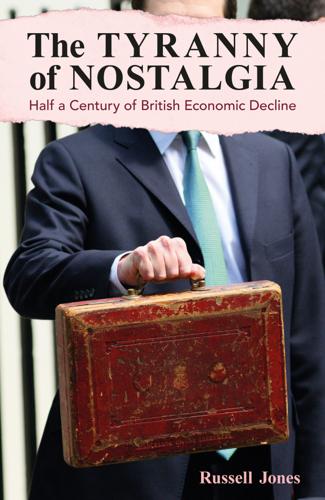
The Tyranny of Nostalgia: Half a Century of British Economic Decline
by
Russell Jones
Published 15 Jan 2023
To this end, soon after his appointment he piloted through the MPC a variation on the BOC’s strategy of forward guidance. In August 2013, with some fanfare and a considerable amount of explanatory material, he announced that so long as (i) inflation remained no more than half a percentage point above target, (ii) inflation expectations were well-anchored and (iii) there was no threat to financial stability, the Bank intended to hold its policy rate and QE settings in place until the unemployment rate had fallen below 7% of the workforce.10 The jobless rate was 7.6% at the time, or just under a percentage point down from its post-GFC peak. Forward guidance was grounded in finance theory, and the notion that longer-term interest rates are determined by the expected path of short-rates plus a term premium influenced by a range of considerations, including uncertainty, risk aversion, market liquidity and preferred investor habitats.11 The idea behind such ‘state-contingent’ guidance was to provide greater clarity about the Bank’s reaction function, to reduce ambiguity about the monetary policy outlook, and to thereby encourage the entire gilt market yield curve – and related borrowing costs – to shift lower.
…
It would seek to use policy to absorb the economy’s spare capacity, of which much remained; and when the MPC started to raise Bank Rate, it expected to do so gradually, with the endpoint well short of the pre-crisis average.12 Overall, however, together with the belated impact of the FLS, forward guidance (or at least the notion that policy would remain accommodative until recovery was better established) seems to have played at least some role in encouraging a pick-up in the pace of growth around this time. Private sector uncertainty declined, business confidence improved and corporate spending and hiring decisions were accelerated in late 2013 and early 2014, although it should not be forgotten that the euro area, by far Britain’s largest trading partner, also began to emerge from its second dip in the middle of 2013.
…
Furthermore, the impetus of fiscal policy placed too heavy a burden on monetary policy, and in particular unconventional monetary policy, to support growth and, latterly, to prevent deflation, while leaving the Bank of England open to public criticism. That said, despite a change of leadership, the Bank’s imagination continued to prove impressively fertile in this regard, even if forward guidance was only a very qualified success and seemed to suggest that where central bank communications were concerned, less could mean more. Moreover, the longer-term consequences of the Bank’s unorthodoxies, and how the Bank might eventually disengage from them, remained unclear. At the same time, financial policy was recalibrated and the financial system was belatedly put on a sounder footing, such that credit creation was gradually reanimated.

MegaThreats: Ten Dangerous Trends That Imperil Our Future, and How to Survive Them
by
Nouriel Roubini
Published 17 Oct 2022
But it too fell short. Instead of adjusting rates into negative territory, the US Fed—and then other central banks—deployed “forward guidance,” the commitment to keep policy rates at zero for longer than otherwise. Hinting at the future allows the Fed to adjust interest rate expectations and thus the yield on longer-dated bonds. That’s why the Fed kept interest rates at zero for much longer than anyone would have predicted. Used first by the Fed in the early 2000s, forward guidance arms individuals and businesses with information that guides economic decisions. In December 2008, with the stock market in free fall following the collapse of two prominent Wall Street firms, the Fed predicted a scenario “likely to warrant exceptionally low levels of the federal funds rate for some time.”10 When that was not enough, the Fed’s and other central banks’ toolkits expanded.
…
The employment target for public policy started with the Employment Act of 1946 and was formalized for the Fed with the Humphrey-Hawkins Full Employment Act of 1978. 9. Jerome Powell, “New Economic Challenges and the Fed’s Monetary Policy Review,” Federal Reserve, August 27, 2020, https://www.federalreserve.gov/newsevents/speech/powell20200827a.htm. 10. “What Is Forward Guidance and How Is It Used in the Federal Reserve’s Monetary Policy?” Federal Reserve. https://www.federalreserve.gov/faqs/what-is-forward-guidance-how-is-it-used-in-the-federal-reserve-monetary-policy.htm. 11. “Size of the Federal Reserve’s Balance Sheet Since Quantitative Easing (QE) Measures Were Introduced from March 2020 to March 2022,” Statista, https://www.statista.com/statistics/1121416/quantitative-easing-fed-balance-sheet-coronavirus/. 12.

The Price of Time: The Real Story of Interest
by
Edward Chancellor
Published 15 Aug 2022
Yet, as the Chicago economist (and former head of the Reserve Bank of India) Raghuram Rajan pointed out, central banks influence the expectations of bond investors: if the short-term interest rate is expected to remain low over the next ten years, the long-term interest rate will be low … By holding down the short-term rate, especially if the market believes it will be held low for a sustained period, the Fed can influence expectations of the future short-term rate and hence the long-term interest rate.8 This is exactly what Bernanke’s Federal Reserve was attempting to achieve after 2008, by making its decision-making more transparent and publishing ‘forward guidance’ on the future direction of interest rates. BIS economists also questioned the conventional wisdom concerning the ‘natural rate’ of interest (depicted as r-star or r* in academic jargon). In theory, the natural rate is the rate at which the economy hums along at its greatest potential while inflation remains under control.
…
In September 2011, the Fed launched Operation Twist, which involved the central bank selling short-dated bonds to buy Treasuries with longer maturities. After Twist came QE3 (September 2012). Bernanke also instituted press conferences after meetings of the Federal Open Market Committee and started to provide ‘forward guidance’ on expected future rate moves. By pledging to keep rates low in future and acquiring bonds with longer maturities, the Fed aimed to force down long-term interest rates.11 Keynes famously compared investing in the stock market to children’s parlour games, like snap or musical chairs. Central banking in the twenty-first century more closely resembled a game of peekaboo.
…
Quantitative easing was originally instituted to restore order to financial markets during a period of panic – a modern extension of Bagehot’s lender of last resort rule (although without the Victorian’s restrictive conditions). But when the Fed launched its third round of QE in September 2012, its aim was to help the jobs market.fn7 The level of unemployment itself proved another moving target. The Fed’s forward guidance originally set an unemployment rate of 6.5 per cent as the threshold for normalizing monetary policy. But when the jobless rate reached this level in 2015, the FOMC concluded that further delay was justified because the ‘natural rate’ of unemployment had fallen. Fed Chairman Janet Yellen, who replaced Bernanke in early 2014, mused that the risks associated with interest rates at the zero lower bound justified keeping the policy rate at zero for longer than otherwise.12 In effect, Yellen was saying that the existence of ultra-low rates was in itself sufficient grounds for maintaining them.
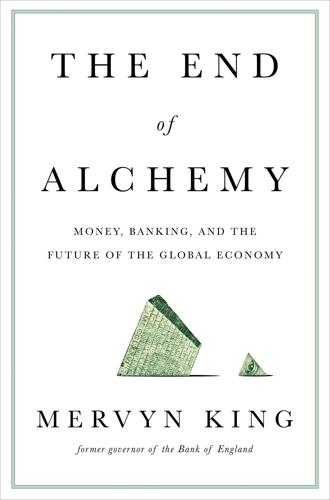
The End of Alchemy: Money, Banking and the Future of the Global Economy
by
Mervyn King
Published 3 Mar 2016
But the publication of transcripts of meetings can inhibit free and open discussion, and the style of meetings of the Federal Open Market Committee has undoubtedly changed since such transcripts were first disclosed in 1994; prepared formal statements are read out, while the important private discussions take place at earlier, often bilateral, meetings.26 In any policy setting, there has to be room for private conversations. There are limits to the desirable degree of transparency. It is also important for central banks to be honest about what they do not know. A case in point was the recent, and rather short-lived, experiment in ‘forward guidance’ adopted by the Federal Reserve and the Bank of England in 2013. Both central banks wanted to provide more information about the likely future path of official interest rates. In the first instance, this was a laudable attempt to reduce uncertainty about how they might respond to developments in the economy.
…
It is that monetary policy runs into diminishing returns; although continually falling real interest rates encourage households to bring forward spending from the future to the present, there comes a point when they are reluctant to sacrifice more and more future spending to increase current spending. I shall return to this quandary in Chapter 9. Now that official interest rates are virtually at zero, an even more extreme version of forward guidance has been proposed by some economists as a way of stimulating the economy.32 The idea is that central banks should promise to allow inflation to go above their normal target at some point in the medium term so that real interest rates – nominal rates less expected inflation – can fall to more negative levels, so stimulating spending.
…
Willetts, David (2010), The Pinch: How the Baby Boomers Took Their Children’s Future – And How They Can Give it Back, Atlantic Books, London. Wolf, Martin (2010), ‘The Challenge of Halting the Financial Doomsday Machine’, Financial Times, 20 April 2010. —— (2014), The Shifts and the Shocks, Penguin, London. Woodford, Michael (2003), Interest and Prices, Princeton University Press, Princeton, New Jersey. —— (2013), ‘Forward Guidance by Inflation-Targeting Central Banks’, mimeo, Columbia University. Woollcott, Alexander (1934), While Rome Burns, Viking Press, New York. Yermack, David (2013), ‘Is Bitcoin a Real Currency?’, National Bureau of Economic Research Working Paper 19747, Cambridge, Massachusetts. Zweig, Stefan (1943) The World of Yesterday, Viking Press, New York.
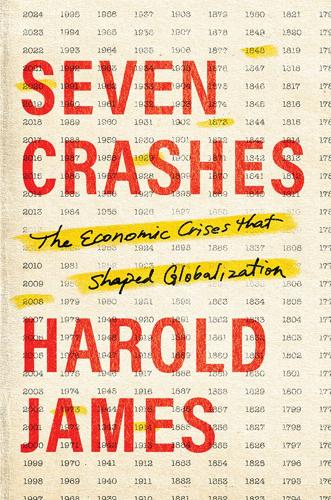
Seven Crashes: The Economic Crises That Shaped Globalization
by
Harold James
Published 15 Jan 2023
The purpose of this action, which subsequently became known as Quantitative Easing 1 (QE1), was formulated more broadly as “to help improve conditions in private credit markets.” Total QE1 purchases were equivalent to 12 percent of GDP. In addition, Fed policy statements in December 2008 began to include explicit references to the likely path of the federal funds interest rate, a policy that came to be known as “forward guidance.” The measures were explicitly motivated by the impossibility of taking interest rates deep into the negative territory that standard models would have recommended given the amount of economic slack. At the March 2009 FOMC meeting, simulations showed that the optimal path of monetary policy should have taken the policy rate (the federal funds rate) to an impossible minus 6 percent.
…
In 2011, the IMF and ECB were broadly in agreement on the need for “gradual withdrawal of monetary stimulus” while continuing unconventional liquidity policies for some time. The IMF at this point put considerable emphasis on concerns about rising inflation.82 In July 2013, the ECB started to use forward guidance, stating that it expected policy interest rates “to remain at present or lower levels for an extended period of time.” It introduced negative interest rates on its deposit facility in June 2014, as well as targeted long-term refinancing operations, with the aim of easing private-sector credit conditions and stimulating bank lending to the real economy.83 For Europe, a substantial attraction of monetary action was that the distributional costs were not as evident or as clearly calculable as they were for the fiscal bailouts that had in 2010 been the initial official response to Europe’s debt crisis.
…
Bernanke later endorsed an interpretation that suggested that the early rounds of aggressive monetary policy action had been ineffective because a large number of influential market observers had assumed that the policy would be reversed.139 The actions of late 2010—and the hullaballoo they provoked—in effect finally convinced markets that the Fed was serious and that the commitment to new policies would be a longterm, binding engagement. It rapidly became styled “Odyssean,” because Odysseus in the Greek legend had tied himself to the mast to resist the calls of the Sirens. From August 2011, in addition, the Fed moved to forward guidance, an explicit commitment to maintaining its policy stance for a predictable, longer time period. By 2020, Bernanke could conclude that there was no going back to the old world of central banking: “On one point we can be certain: the old methods won’t do. . . . Simulations of the Fed’s main macroeconometric model suggest that the use of policy rules developed before the crisis would result in short-term rates being constrained by zero as much as one-third of the time.”140 This was a mirror image of the old model of central bank behavior, where the same classical analogy had been frequently used as the rationale for central bank independence, and policy made by a “conservative central banker.”
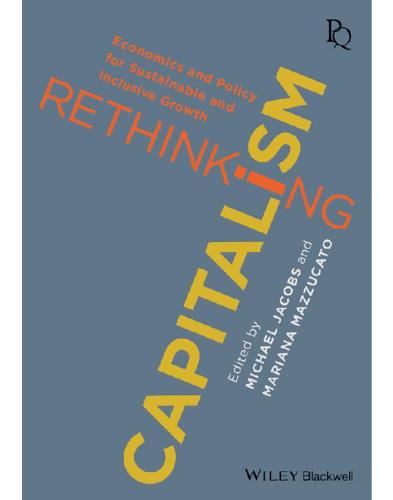
Rethinking Capitalism: Economics and Policy for Sustainable and Inclusive Growth
by
Michael Jacobs
and
Mariana Mazzucato
Published 31 Jul 2016
Fiscal headwinds were on the horizon, and there was growing pressure on the Fed to do more. Columbia University’s Michael Woodford led the charge with his presentation at Jackson Hole in August 2012.37 Woodford gained notoriety for insisting that ‘forward guidance’, rather than a renewed round of quantitative easing, was the way to gain traction at the zero lower bound (ZLB). On 13 September 2012, the Fed went all-in, announcing the open-ended bond-buying programme known as QE3, along with ‘forward guidance’ to reassure market participants that the Fed was likely to keep the federal funds interest rate near zero at least through 2015.38 The Fed continued its elevated bond-buying programme for more than a year before it began tapering its purchases by $10 billion per month in December 2013.
…
Yet growth picked up, accelerating from an annual rate of 2 per cent in 2012 to 2.6 per cent in 2013. How could that be? Were the fiscal headwinds exaggerated? Was this proof that austerity worked? Had Bernanke been too pessimistic about the relative efficacy of monetary policy? Did doubling down with QE3 and forward guidance at the end of 2012 not only prevent a slowdown but also so juice the economy that growth actually accelerated in 2013? Scholars will undoubtedly debate these questions for a while yet. At present, economic opinion appears to be coalescing around the following narrative. First, experience demonstrates that monetary policy can counteract fiscal tightening, even at the ZLB, provided it is carried out by a sufficiently credible and committed central bank.

EuroTragedy: A Drama in Nine Acts
by
Ashoka Mody
Published 7 May 2018
Coming after a “stunning” 150-basis-point cut by the Bank of England (BOE) earlier that day, the ECB’s limited move disappointed financial markets. December 16, 2008: Fed reduces interest rates to near zero, begins forward guidance, and announces quantitative easing. The Fed lowered its interest rate to the 0.0–0.25 percent range, publicly committed itself to keeping interest rates low for “some time” (forward guidance), and initiated quantitative easing (QE), which is the purchase by the central bank of long- term bonds and other securities to bring down long-term interest rates. March 5, 2009: BOE reduces interest rates and launches QE.
…
node_code=prc_hicp_midx. 10 Jun Aug Oct Dec Feb 2007 07 07 07 08 Apr 08 Jun Aug Oct Dec Feb 08 08 08 08 09 Apr 09 Jun Aug Oct Dec 09 09 09 09 5 0 –5 –10 –15 –20 –25 Aug. 9, 2007: BNP Paribas halts withdrawal from mortgagebased funds March 14, 2008: Dec. 17, Rescue 2007: First of Bear “Term Stearns Auction Facility” auction Sept. 15, 2008: July 3, Lehman 2008: Brothers ECB bankruptcy raises Dec. 16, 2008: Federal policy Reserve lowers rate to rates May 7, 2009, Release of near zero and begins US banks’ stress-test quantitative easing and results “forward guidance” United States Euro Area Figure 5.4b. Euro-area industrial production growth falls behind. (Annual growth rates, percent; three-quarter moving averages) Note: The three-month average of growth over the same three months in the previous year. Source: World Trade Monitor, https://www.cpb.nl/en/data.
…
The Fed—although unwilling to raise its inflation target to 5-6 percent—made the big move, thus setting the benchmark for the others. On Tuesday, December 16, the Fed slashed its policy rate by 75 basis points down to 0–0.25 percent.133 With no more room to lower rates, the Fed also began “forward guidance,” a promise to keep its policy interest rate at “exceptionally low levels for some time.”134 But the most ambitious policy the Fed announced that day was its quantitative easing (QE) program. The Fed would start buying long-term bonds and other securities to help bring down long-term interest rates right away, making it more attractive for households and businesses to borrow and, hence, to spend.135 Bloomberg Businessweek commented: “It’s a measure of the severity of the financial crisis that there were no dissenters from the Fed vote.
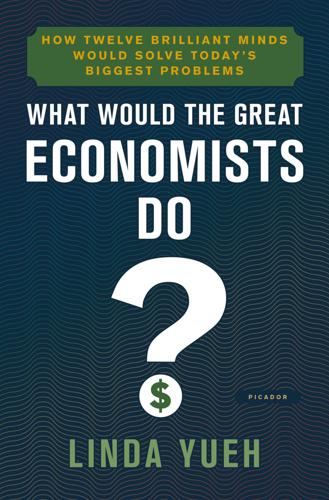
What Would the Great Economists Do?: How Twelve Brilliant Minds Would Solve Today's Biggest Problems
by
Linda Yueh
Published 4 Jun 2018
As Robinson remarked: ‘The misery of being exploited by capitalists is nothing compared to the misery of not being exploited at all.’19 10 Milton Friedman: Are Central Banks Doing Too Much? The 2008 financial crisis has introduced new economic terms into popular use, like central banks undertaking quantitative easing (QE or cash injections), forward guidance (central banks saying what they think interest rates might be in the future), negative interest rates (central banks charging commercial banks for depositing money with them) and macroprudential policy (central bank regulations aiming for financial stability), to name a few. These are in addition to using interest rates to target price stability or inflation, and are ‘unconventional’ or fairly new monetary policy tools.
…
Glossary BRIC economies The acronym stands for Brazil, Russia, India and China, a term coined by investment bank Goldman Sachs to identify the large emerging markets with good growth potential. current account deficit/surplus The difference between the value of traded goods and services, and portfolio capital, flowing into and out of the country. first-generation currency crisis The Latin American crisis of 1981–82. forward guidance Central banks giving guidance as to where interest rates might be in the future. G7 A group comprising seven of the world’s major economies – Canada, France, Germany, Italy, Japan, the United Kingdom and the United States – formed with the intention of shaping global economic policy. global financial crisis The failure of many of the world’s leading financial institutions precipitated in 2008 by the collapse of the US sub-prime mortgage market.
…
Buccleuch, Henry Scott, 3rd Duke of budget deficits and austerity Burns, Arthur Burns, Mary business cycle theory Fisher Hayek Schumpeter Callaghan, James Cambridge School see also Keynes, John Maynard; Marshall, Alfred; Robinson, Joan Cambridge University Girton College Kings College Newnham College St Johns and women Canon capital accumulation capital investment capitalism in aftermath of 2008 financial crisis and communism derivation of term and Engels and the financial crisis of 2008 free-market and Hayek inequality and capitalist economies laissez-faire see laissez-faire and Marx and the Occupy movement and Schumpeterian ‘creative destruction’ socialism vs welfare state capitalism car industry Carney, Mark Carter, Jimmy Case, Elizabeth central banks Bank of England Bank of Japan European Central Bank Fed see Federal Reserve forward guidance macroprudential policy monetary policy tools see also quantitative easing (QE) Chamberlin, Edward Chicago School see also Friedman, Milton Chile China 1949 revolution asset management companies banking system Beijing Consensus Communist Party corporate debt Cultural Revolution domestic innovation economic transformation ‘effect’/‘price’ employment system entrepreneurs exports Five Year Plan (1953) foreign direct investment (FDI) and Germany industrialization and reindustrialization inequality innovation challenge legal institutions manufacturing Maoism and Marx national debt openness ‘paradox’ poverty reduction privatization R&D investment regional free trade agreement renminbi (RMB) as second largest economy services sector shadow banking smartphones social networks trade-to GDP ratio and the USSR wage increases women Churchill, Winston class Engels’ The Condition of the Working Class in England and Marx middle see middle class and Ricardo wage earner class Classical School of economics see also Mill, John Stuart; Ricardo, David; Smith, Adam Clinton, Bill Clinton, Hillary cloth clothing Coase, Ronald Cold War Collectivist Economic Planning collectivization Collier, Paul Columbia University communism Bolshevik Party and capitalism Chinese Communist League First International Marxism see Marxism and Robinson Socialist/Second International Third International USSR see Soviet Union Vietnamese vs welfare state capitalism Communist League comparative advantage theory competition ‘competing down’ (Schumpeter) imperfect between money providers perfect and Robinson wages and competitiveness computers Conard, Ed construction consultancy firms consumerism consumption and comparative advantage theory consumer spending and marginal utility analysis convergence hypothesis corn, free trade in Corn Laws repeal and Ricardo corporate debt Cowles Commission Crafts, Nicholas crafts credit crunch credit default swaps (CDS) credit rating Crimean War crypto-currencies currency crises first-generation second-generation third-generation currency stability Cyprus death duties debt Chinese corporate debt-deflation spiral and government bonds indexation and protection from and Minsky’s financial instability hypothesis mortgage debt national see national debt private corporate as share of GDP decentralization defence deflation debt-deflation spiral Fisher and combating deflation Japan self-fulfilling deindustrialization and globalization premature reversing/reindustrialization and trade US Deng Xiaoping depression see Great Depression (1930s); Long Depression (1880s); recession/depression diminishing returns to capital distributive lag model Douglas, David, Lord Reston Douglas, Janet DuPont East Asian ‘tiger’ economies see also Hong Kong; Singapore; South Korea; Taiwan eastern Europe Eastman Kodak Econometric Society Econometrica economic development challenges and Beijing Consensus financial/currency crises and institutions and Lewis model Myanmar and North and path dependence poverty eradication/reduction South Africa Sustainable Development Goals Vietnam and Washington Consensus economic equilibrium economic freedom economic growth and austerity barriers convergence hypothesis development challenges see economic development challenges drivers of 2 see also innovation; institutions; public investment; technology endogenous growth theories inclusive growth through investment Japan’s growth and Japan’s ‘lost decades’ Lewis model mercantilist doctrine of and new technologies policy debates on raising and poverty reduction and productivity debate/challenge slow growth and the future Solow model UK government’s renewed focus on and unemployment Economic Journal economic rent Ricardo’s theory of economies ‘animal spirits’ of crises see financial crises deflation see deflation emerging see emerging economies equilibrium in GDP see gross domestic product global macroeconomic imbalances growth of see economic growth inequality and capitalist economies inflation see inflation and international trade and investment see investment; public investment national debt see national debt QE see quantitative easing rebalancing of recession see recession/depression services economy see services sector and stagnant wages state intervention Economist education higher role in reducing inequality universal Eliot, T.
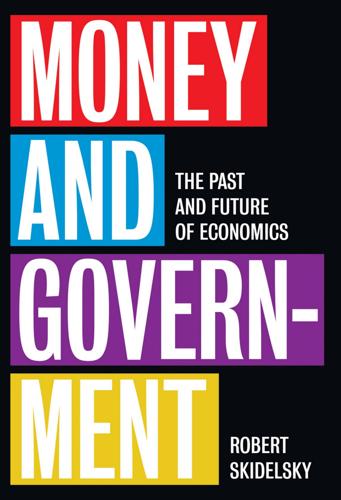
Money and Government: The Past and Future of Economics
by
Robert Skidelsky
Published 13 Nov 2018
At first it hoped to take advantage of their ‘surprise’ effect. When it discovered that the surprise soon wore off, it started to emphasize signalling and ‘forwardguidance’. When the Bank acts, its actions give clues to what it will do in the future, and these clues are signals; ‘forward-guidance’ is an explicit commitment to act in a certain way under specified conditions. In its most explicit form, the forward-guidance channel works through policymakers making long-term commitments to keep interest rates exceptionally low. The policy boasts a placebo effect – self-fulfilling prophecies producing a recovery without undertaking the significant risks of expanding the central bank’s balance sheet.
…
But this rate has already been cut to the lowest level that the Bank feels comfortable with . . . another way for the Bank to support the economy has been to offer this indicator, by which companies and mortgage borrowers can estimate for how long such low interest rates may be around for in terms of months or years. Forward guidance is thus a way of converting low short-term interest rates into lower long-term interest rates. The thinking is that if the High Street banks can be convinced that they will be able to borrow overnight from the Bank of England at just 0.5% for many nights – indeed many months or years – to come, then they will hopefully be willing to lend money out to the rest of us for the longer term at a commensurately lower interest rate as well.42 There is a trade-off between credibility and pragmatism.
…
Available at: https://staging.businessreporter.co.uk/2014/08/03/the-big-interview-nick-leeseon-the-original-roguetrader-on-regrets-and-revival/ [Accessed 6 December 2017]. BBC (2010), Irish deficit balloons after new bank bail-out. Available at: http://www.bbc.co.uk/news/business-11441473 [Accessed 4 July 2017]. BBC (2014), Q&A: What is ‘forward guidance’? Available at: http://www. bbc.co.uk/news/business-23145755 [Accessed 10 July 2017]. BBC News (2003), Buffett warns on investment ‘time bomb’. Available at: http://news.bbc.co.uk/1/hi/2817995.stm [Accessed 31 July 2017]. Beattie, A. and Giles, C. (2010), Obama urges G20 to boost demand. Financial Times, 18 June.

Money: 5,000 Years of Debt and Power
by
Michel Aglietta
Published 23 Oct 2018
Figure 6.8 Deformation of the rates curve on approach to zero nominal rate The central bank tries to have an effect on long-term rates by influencing anticipated short-term rates. It does this by making a commitment to preserve the short-term rate at zero while certain stated employment and inflation conditions are not met. This is the policy of guiding future interest rates (forward guidance). If the central bank’s commitment is credible, then the anticipation-element of long-term rates will remain low. Forward guidance also allows a reduction in the influence that the volatility of future short-term rates has on the price of risk. It thus pushes down the rate curve as a whole (Figure 6.8). The rise in the price of risk also reflects the weakened liquidity of the assets held by financial investors (a weakening linked to the risk of heavy value losses, should it appear necessary to liquidate these assets).
…
The central bank will make targeted purchases of long-term assets in order to place beyond market stress that asset which is the pivot of the financial markets, namely, the state bonds at various different maturities. This allows it to flatten the gradient of the rate curve and thus to complement forward guidance with control of the term premium. It can also buy up certain long-term assets that are particularly affected by the crisis, like mortgage securities in the US and UK, and more recently in the eurozone, or even certain company bonds. These are targeted asset purchases.14 If the central bank makes unlimited purchases of certain types of assets, it changes the liquidity of the securities chosen in relation to other securities, and thus the term premiums.
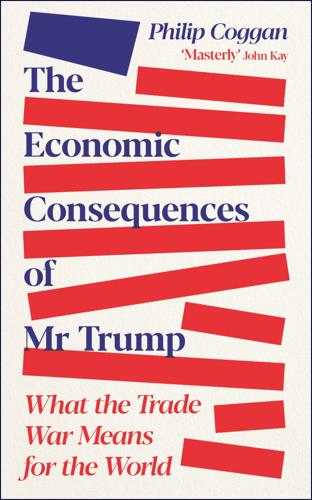
The Economic Consequences of Mr Trump: What the Trade War Means for the World
by
Philip Coggan
Published 1 Jul 2025
But the plan involved raising tariffs gradually in order not to upset the markets. Instead Trump pushed up tariffs rapidly and massively on 2 April, and prompted market turmoil. The administration then suspended many of the most punitive tariffs on 9 April. This was not the kind of ‘credible forward guidance’ that Miran suggested. Clearly, there was nothing sophisticated about the formula at all. Instead of a game of three-dimensional chess, the president was playing darts with a javelin; the only plausible outcome was the destruction of the board, and great danger to everyone around him. Supporters claimed, as evidence of Mr Trump’s ‘genius’, that nations were queueing up to negotiate away the tariffs.
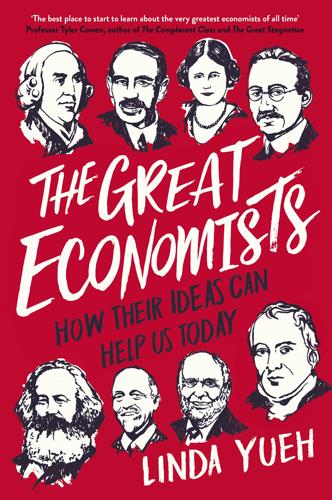
The Great Economists: How Their Ideas Can Help Us Today
by
Linda Yueh
Published 15 Mar 2018
As Robinson remarked: ‘The misery of being exploited by capitalists is nothing compared to the misery of not being exploited at all.’19 CHAPTER 10 Milton Friedman: Are Central Banks Doing Too Much? The 2008 financial crisis has introduced new economic terms into popular use, like central banks undertaking quantitative easing (QE or cash injections), forward guidance (central banks saying what they think interest rates might be in the future), negative interest rates (central banks charging commercial banks for depositing money with them) and macroprudential policy (central bank regulations aiming for financial stability), to name a few. These are in addition to using interest rates to target price stability or inflation, and are ‘unconventional’ or fairly new monetary policy tools.
…
Minsky Conference on the State of the US and World Economies – ‘Meeting the Challenges of the Financial Crisis’; www.frbsf.org/our-district/press/presidents-speeches/yellen-speeches/2009/april/yellen-minsky-meltdown-central-bankers/ Yergin, Daniel and Joseph Stanislaw, 1998, The Commanding Heights: The Battle Between Government and the Marketplace that is Remaking the Modern World, New York: Free Press Yueh, Linda, 2010, The Economy of China, Cheltenham: Edward Elgar ———, 2011, Enterprising China: Business, Economic, and Legal Developments Since 1979, Oxford: Oxford University Press ———, 2013, China’s Economic Growth: The Making of an Economic Superpower, Oxford: Oxford University Press Glossary BRIC economies The acronym stands for Brazil, Russia, India and China, a term coined by investment bank Goldman Sachs to identify the large emerging markets with good growth potential. current account deficit/surplus The difference between the value of traded goods and services, and portfolio capital, flowing into and out of the country. first-generation currency crisis The Latin American crisis of 1981–82. forward guidance Central banks giving guidance as to where interest rates might be in the future. G7 A group comprising seven of the world’s major economies – Canada, France, Germany, Italy, Japan, the United Kingdom and the United States – formed with the intention of shaping global economic policy. global financial crisis The failure of many of the world’s leading financial institutions precipitated in 2008 by the collapse of the US sub-prime mortgage market.

Unknown Market Wizards: The Best Traders You've Never Heard Of
by
Jack D. Schwager
Published 2 Nov 2020
£26,000 on a £10,000 risk line is pretty good performance. Maybe, but one thing the return statistics don’t show is missed trades. I made my money mostly by trading events, and with the ongoing European debt crisis, there were many opportunities to make money trading events. Monetary policy was changing a lot in those days, forward guidance was introduced, and quantitative easing was restarted. There were so many events to trade, and I kept screwing up. I wasn’t well prepared for them. It was a vicious cycle of missing a trade, feeling like crap for missing the trade, and then watching everyone else making loads of money off of it.
…
I would have a good day, become complacent, and then be unprepared for the next event, which turned out to be an excellent trading opportunity. It was hit and miss. I am much better now, but there are also far fewer opportunities now than back in 2013 and 2014. Back then, many things were still relatively new, like quantitative easing and forward guidance. There was more uncertainty about what the central banks were going to do and how they were going to do it. Whereas now, the markets have central banks so nailed down that there is not as much opportunity to make money on central bank actions as there once was. The markets now are good at pricing in events before they happen.
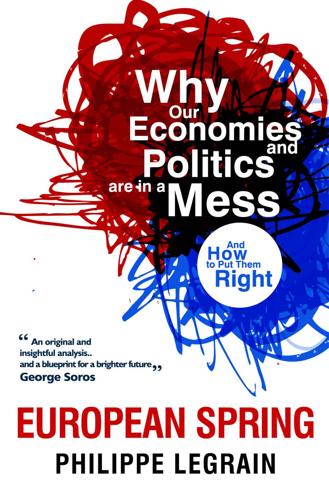
European Spring: Why Our Economies and Politics Are in a Mess - and How to Put Them Right
by
Philippe Legrain
Published 22 Apr 2014
In August 2013, the new governor of the Bank of England, Mark Carney, who had the good fortune to leave his job running Canada’s central bank just as that country’s housing bubble appears to be bursting, called time on QE and tried a new trick designed to give monetary policy more traction: “forward guidance”.436 He sought to reassure markets, businesses and the general public that he would not raise interest rates until the unemployment rate had fallen to 7 per cent – so long as this did not threaten to destabilise inflation or the financial system.437 But although Carney had been lionised by Osborne – who hailed him as “the outstanding central banker of his generation”, something his peers might dispute – markets were not impressed by his announcement.438 Far from falling after he spoke, longer-term interest rates rose substantially.
…
Footnote 9, page 16 433 The Funding for Lending scheme was launched in August 2012 and subsequently extended to January 2015. 434 In April 2013, the terms were made more generous for banks that lent more and sooner to smaller businesses. 435 http://www.hsbcnet.com/gbm/global-insights/insights/2013/stephen-king-pain-killers-might-work-but-economies-need-antibiotics.html 436 Forward guidance involves signalling what future interest rates are likely to be. But as Erik Nielsen, the chief economist of Unicredit, has pointed out, if a commitment to keep interest rates low is too weak and full of escape clauses, it is likely to have little effect on markets’ expectations. On the other hand, a firm commitment to keep interest rates low come what may risks undermining a central bank’s credibility, because if it is successful and stimulates the economy, the central bank will subsequently be torn between leaving rates low and risk inflation taking off or breaking its promise and losing credibility.
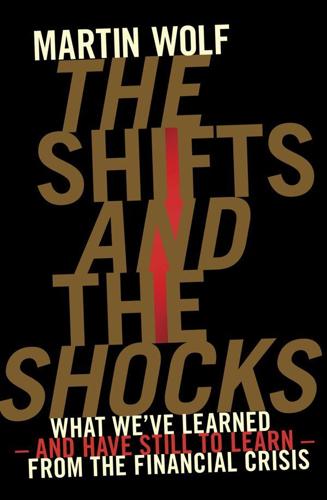
The Shifts and the Shocks: What We've Learned--And Have Still to Learn--From the Financial Crisis
by
Martin Wolf
Published 24 Nov 2015
The busts that follow prolonged credit booms are both very costly and very hard to remedy.7 One reason for this is that with interest rates at or close to the zero bound, the effectiveness of monetary policy is constrained, though not zero. Prolonged periods of ultra-low interest rates, together with quantitative easing and ‘forward guidance’ – indications of low policy rates far into the future – have brought only a modest recovery. Thus, as of early 2014, neither the US nor the UK had achieved rates of growth higher than before the crisis. The recovery had, accordingly, not even begun to close the proportional gap between actual output and the pre-crisis trend.
…
This could have brought the benefit of not relying so much on a policy that amounts to manipulating asset prices and encouraging further borrowing. The risks of such an expansionary monetary policy, even if effective, are real. Furthermore, while not as unmanageable as some critics allege, exit from unconventional monetary policy, including massively expanded balance sheets and forward guidance, is sure to create bumps along the road. With a more expansionary fiscal policy, monetary policy could have been less extreme than it was. For all these reasons, the decision to tighten fiscal policy after 2010 was almost certainly premature and unwise. It would have been better to rely more on fiscal policy and less on monetary policy.

The Default Line: The Inside Story of People, Banks and Entire Nations on the Edge
by
Faisal Islam
Published 28 Aug 2013
‘Open-mouth operations’ involve using communications to guide down expectations of future interest rises. ‘Forward guidance’ is the innovation of the moment, involving the managing-down of expectation using speeches and press statements. The hope would be that a company would be more likely to take out a loan for more equipment, or a homebuyer a mortgage, if there exists confidence on low rates over a period of years. Both Mr Carney and the ECB president Draghi deployed forms of ‘forward guidance’ in July 2013. The end result is lower interest rates for longer. The guidance can be supplemented with a conditional threshold too.
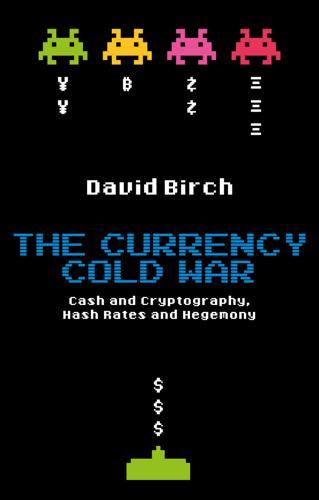
The Currency Cold War: Cash and Cryptography, Hash Rates and Hegemony
by
David G. W. Birch
Published 14 Apr 2020
Article, Cornell Law School, May. Hockett, R. 2019b. The New York inclusive value ledger: a peer-to-peer savings & payments platform for an all-embracing and dynamic state economy. Research Paper, Digital Fiat Currency Institute, September. Jeffery, C., and D. Hinge. 2019. Mark Carney on joined-up policy-making, forward guidance and Brexit. Central Banking, 19 August. John, A. 2019. China’s digital currency not seeking ‘full control’ of individuals’ details: central bank official. Reuters, 20 November. URL: https://reut.rs/3duwltY. Judson, R. 2017. The death of cash? Not so fast: demand for US currency at home and abroad 1990–2016.
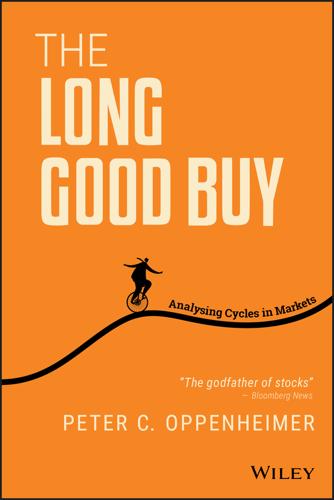
The Long Good Buy: Analysing Cycles in Markets
by
Peter Oppenheimer
Published 3 May 2020
Whatever the reasons, forward market measures of inflation have also fallen compared with previous cycles. In the past, labour market tightening often generated substantial and persistent inflationary pressure, causing central banks to raise interest rates sharply, thereby raising the risks of recession. But since the 2000s more effective forward guidance by central banks has contributed to lower and more stable inflation, alongside a flatter Phillips curve (the relationship between unemployment and inflation), resulting in much more stable inflation expectations.11 To some degree, the impact of QE has also been responsible.12 I discuss in more detail the impact of inflation expectations and ultra-low bond yields in chapter 10.

The Finance Book: Understand the Numbers Even if You're Not a Finance Professional
by
Stuart Warner
and
Si Hussain
Published 20 Apr 2017
However, ratios are open to interpretation and should not be reviewed in isolation. Investor ratios can be subject to significant fluctuation, for example, as a result of share price volatility. Using published numbers from financial statements also limits the usefulness of ratios as historic data only provides trailing indicators rather than forward guidance. Directors should consider the impact of their decisions on the ratios which are important to current and potential investors. Nice to know Price Earnings Growth (PEG) ratio While the P/E ratio is the widest-used metric to compare companies, it is a metric based on historic earnings data (trailing P/E).
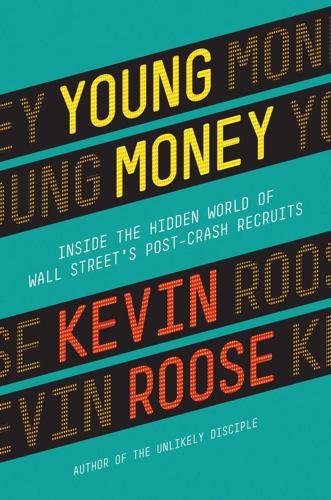
Young Money: Inside the Hidden World of Wall Street's Post-Crash Recruits
by
Kevin Roose
Published 18 Feb 2014
Lots of people chimed in with observations about how these phenomena might affect the financial markets, and the unmistakable impression given off was that this is a serious group. These guys had opinions about austerity in Greece, the effects of expansionary monetary policy, and the Federal Reserve’s forward guidance. They weren’t the most brilliant market insights I’ve ever heard, but for guys who should by virtue of their stations in life be saying “bro” a lot and doing keg stands, they weren’t half bad. Despite their ages, most of the members of Black Diamond are somewhat experienced investors. There’s Bryce, a sophomore from Southern California who ordered his first annual report at age thirteen, began investing shortly thereafter, and at sixteen was the youngest-ever person to apply for a job at PIMCO, the giant California-based investment manager.

Unelected Power: The Quest for Legitimacy in Central Banking and the Regulatory State
by
Paul Tucker
Published 21 Apr 2018
In the case of the Bank of England, the Westminster Parliament having specified “price stability” as the primary objective, the executive government could not set a target for inflation that is unreasonably high without risking challenge in the courts. But some of my former colleagues were concerned about subtle backseat driving when, in 2013, the remit was amended to push the MPC toward employing “forward guidance” on the future path of interest rates (which, it should be said, the incoming governor was committed to). As provided for by the fourth Design Precept, the executive government needs to be monitored and held accountable by the legislature for its part in the determination of IA regimes. Constitutionally, the remit mechanism can work in the UK because ministers, including the prime minister, are subject to the law and are accountable to Parliament.
…
When the money markets are disfunctional, solvent banks simply go into bankruptcy if they cannot acquire reserves via the central bank’s OMOs.6 At the effective lower bound for nominal interest rates, the only instrument available to the central bank would be to talk down expectations of the future path of the policy rate (what has become known as forward guidance).7 All other interventions to stimulate aggregate demand—for example, the “quantitative easing” and “credit easing” of the postcrisis years—would fall to the “fiscal arm” of government. That—not a judgment on the merits of the minimal conception—is my main point: what is not within the realm of the central bank falls to elected policy makers, with the attendant problems of credible commitment and time inconsistency.

Superforecasting: The Art and Science of Prediction
by
Philip Tetlock
and
Dan Gardner
Published 14 Sep 2015
Try to imagine the mild-mannered Ben Bernanke channeling Jack Nicholson’s rage from the film A Few Good Men: “You can’t handle the truth.” In this view, we just aren’t mature enough to handle the numbers. So we must continue to decode statements like this from Janet Yellen in February 2015: “It is important to emphasize that a modification of the forward guidance should not be read as indicating that the committee will necessarily increase the target range in a couple of meetings.” See James Stewart, “Wondering What the Fed’s Statements Mean? Be Patient,” New York Times, March 13, 2015, C1. The implications for the IC are clear. Even if the IC eventually went as far as the Fed toward quantifying assessments of uncertainty in its internal deliberations, the IC should stick with sphinxlike external messaging. 13.
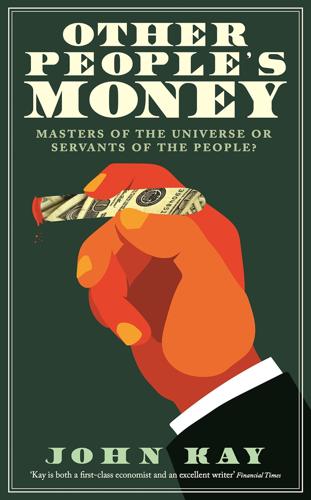
Other People's Money: Masters of the Universe or Servants of the People?
by
John Kay
Published 2 Sep 2015
The chosen target changes according to the fashion of the time. In the 1980s money supply growth was the preferred indicator, then inflation-targeting came into vogue. The scale of indebtedness that emerged in the global financial crisis led many to favour commitment to a path of debt reduction. At the time of writing, forward guidance – a supposedly binding conditional declaration of future intentions – is coming to the end of its brief moment in the sun. These strategies of commitment to declared goals have intellectual and ideological attractions. The political right applauds the abandonment of discretion, or at least the appearance of such abandonment, which supposedly secures economic stability with minimal political intervention.
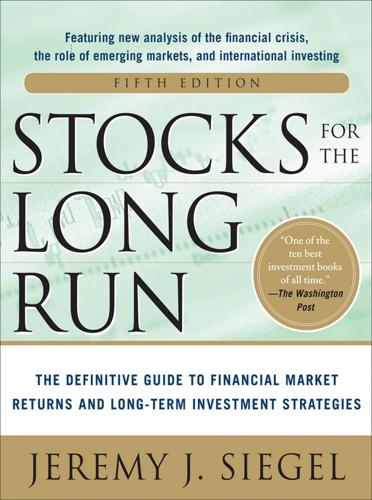
Stocks for the Long Run 5/E: the Definitive Guide to Financial Market Returns & Long-Term Investment Strategies
by
Jeremy Siegel
Published 7 Jan 2014
It is perfectly possible for firms to fall short of revenue estimates and fail to meet their margin expectations, yet still beat on per share earnings because over the past quarter the firm has reduced the number of shares outstanding through corporate buybacks. Per share earnings can continue to grow even if overall revenues are stagnant. Finally, investors are influenced by any earnings guidance that firms give over the next quarter or year. Forward guidance below earlier forecasts will certainly influence the stock price negatively. Years ago, management would often tip off analysts when unexpected good or bad news impacted the firm. But after tough new fair disclosure laws were adopted by the SEC in 2000, such selected disclosure is no longer permitted.

Connectography: Mapping the Future of Global Civilization
by
Parag Khanna
Published 18 Apr 2016
Obama’s 2015 National Security Strategy was more a meditation on the past than a vision for the future—more talk than action. A grand strategy premised more on containing than shaping Russia, Iran, and China smacks more of futility than vision, while the minimalism of habitually uttering the need for “restraint” provides no forward guidance. America’s top diplomats have forgotten that standing on the shoulders of giants doesn’t make one a giant. They have instead been little more than celebrity firemen and firewomen, leaving little dent on the international arena other than the weight of their self-congratulatory autobiographies.
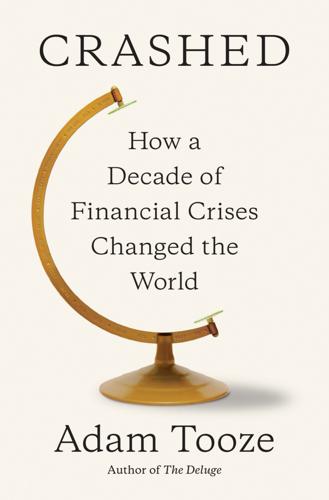
Crashed: How a Decade of Financial Crises Changed the World
by
Adam Tooze
Published 31 Jul 2018
Not that exciting, but what the hay, it’s an existence! . . . Mother Nature nor Mother Market cares not a whit for your losses nor your hoped for double-digit return from an equity/bond portfolio that is priced for much less. Be a contented cow, not a voracious crow, and graze wisely with increasing certainty that the Fed and its forward guidance is your best bet for survival.”41 With trillions of dollars at stake and markets feverishly trying to second-guess the Fed’s policy, was Bill Gross’s pastoral image not wishful thinking? Rather than a herd grazing contentedly, to the Financial Times it seemed that relations between the markets and the Fed were increasingly coming to resemble the contorted psychodrama of a rocky marriage.